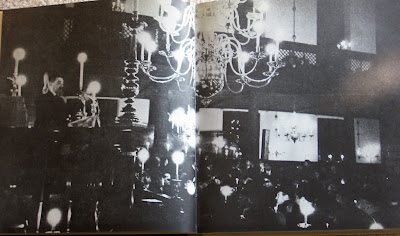At a second look, however, you can feel there's something strange about the photos, although you do not know what. After a more thorough examination, you will notice some small details, like that their faces are unnaturally smooth and that one of the little girls does not have eyebrows at all… What a trained eye may also find disturbing in some of the children is the unnatural reflections of studio flashes in their eyes, which makes the kids seem as if they had been crying.
Ruud van Empel uses the method of photographic montage. "To produce these portraits, he took photos of several children, let's say five or six, and then combined their faces in a graphic computer programme to create a new, non-existing child," Leica Gallery Prague deputy director Věra Weinerová said.
Using his computer as a paintbrush, Empel creates artificial landscapes for which high-quality processing is typical. Thanks to that, you can spend quite a lot of time in front of each of the photographs, discovering more and more details - dewdrops here, a spider there, small beetles sitting on leaves, a little bird at the back, perfectly illuminated although in the shadow of trees.
The author focuses on perfect arrangement of individual objects rather than on what they look like in reality. It happens then that some of the objects are not in proportion to others in terms of size, but this is offset by a perfect harmony of colours and shapes. Every potentially empty space, like the corners, is filled with details - mushrooms, the Moon, diagonally arranged objects of the same colour - to achieve an aesthetically balanced composition. The resulting images are too perfect, perhaps an impression of what childhood should be like, of a fairy tale, or of a paradise.
Ruud van Empel won fame already in the past as a 3D graphic designer in television. Now he applies the 3D method in his photographs, which seems to be bringing him success as well.
"His photographs sell at unbelievable prices," said Jana Bömerová, head of Leica Gallery Prague. "He cooperates with four large famous galleries. He produces 12-piece numbered series, each gallery gets three pieces, and the photos sell in a few days," she added.
Ruud van Empel (Breda, 1958) produced television series as well as theatre posters and stamps. His photographic montages inspired by naive realism are deliberately too perfect and include an excessive number of details and colours - whether placed in a jungle or in a modern office.
In his photographs, Empel focuses on specific topics that he deals with in stages - civil servants in the series The Office (1996-2001), window views in Frame Story (1998-2000), fatal women in Study for 4 Women (2000) and The Naarden Studies (2002).
In his first exhibition in the Czech Republic, at Leica Gallery Prague, Empel presents a selection of portraits of children from his latest series Study in Green. Lees verder ...
Exhibition to last till 18 April 2009
Leica Gallery Prague, Školská 28, Prague 1
open daily from 11 a.m. to 9 p.m.
admission CZK 50, reduced admission CZK 30
 Lenka Scheuflerová
Lenka Scheuflerováis a staff writer and translator at the Monitor.
She likes writing about business, finance and photography.
You can reach her at lenka@praguemonitor.com

























































